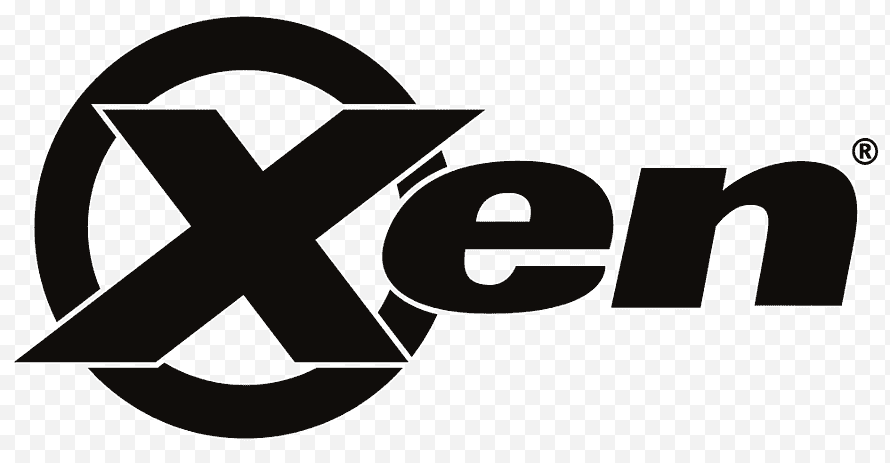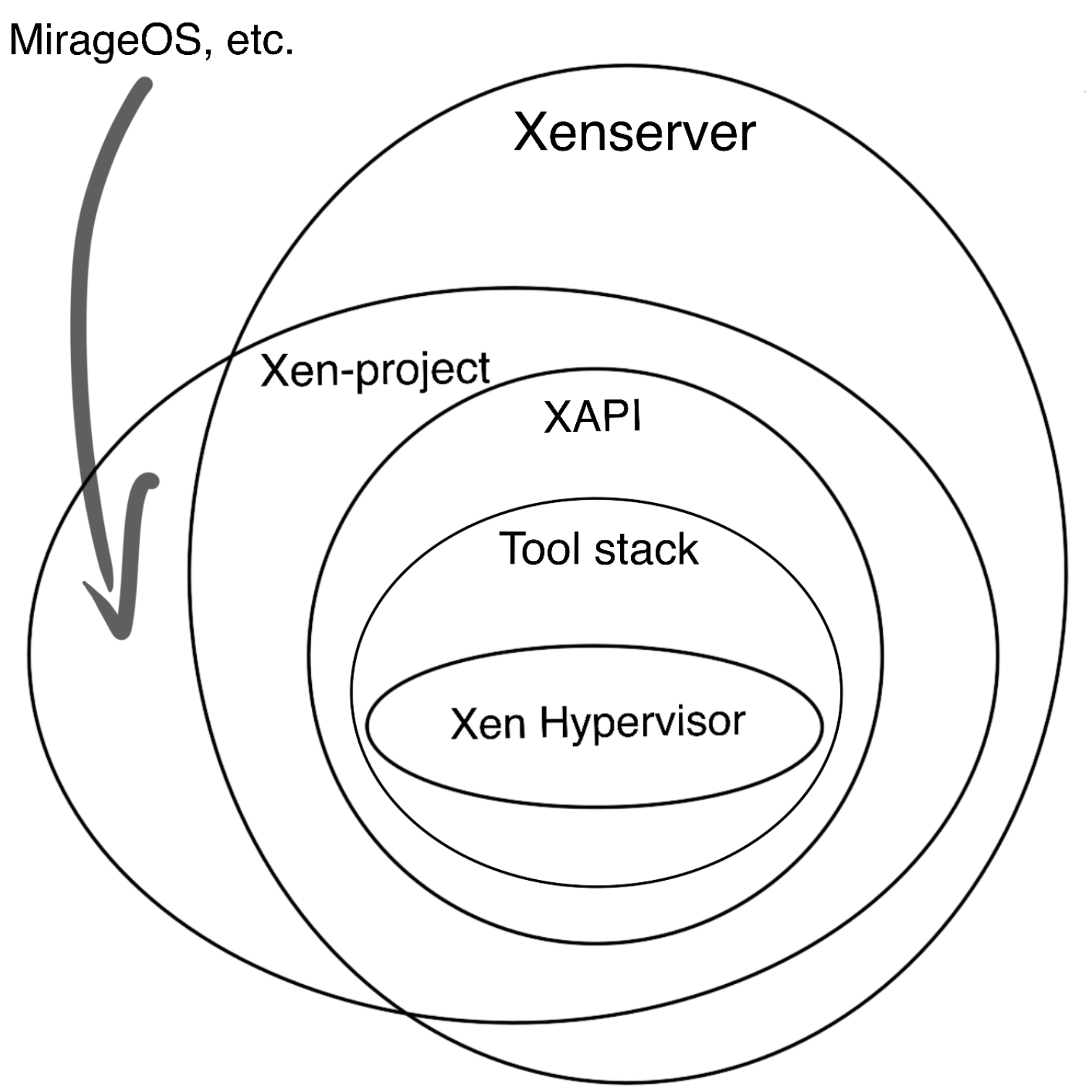Drawing boundaries for the Xen ecosystem

Pre-requisite knowledge assumed: Hypervisor
—
The Xen ecosystem is quite ironic. It’s main product is hypervisor that cleanly separates hardware resources. However, when it comes to the organization of it’s ecosystem though, the lines between tools and terminology are blurred and complicated. My post today is my understanding and attempt to draw boundaries to help myself and other beginners compartmentalize parts of the ecosystem. I will detail the 4 big components: Xen hypervisor, Xen-project, Xenserver and XAPI.
Xen hypervisor
Xen is the name of a type-1 hypervisor (Bare metal) which gives enables virtualization of multiple operating system to run on the same host machine. In the software stack, the Xen hypervisor can be thought of as a custom kernel (excluding device drivers) which “shims” in the functionality to separate and isolate the hardware. On top of the hypervisor, there are regions known as “domains” which can be seen as a container for each guest operating system. There is a special domain called “dom0” aka the “Control domain” which holds contains a Linux kernel that provides the device drivers for the host. It is a privileged domain that is able to “talk” directly to the hypervisor and instruct it to spin up or shutdown other guest operating systems. The device drivers in dom0 are shared with the other guest operating systems in their respective unprivileged domains, referred to as “domU’s”.
The order in which the components interface with one another are as follows:
Guest OS_1, Guest OS_2, GuestOS_N... (domU's)
Control Domain (dom0)
Xen Hypervisor
Physical Hardware
Xen-project
The Xen-project is a collection of open source projects hosted under the Linux foundation. It contains the hypervisor itself and several sub-projects including: Windows PV driver, MirageOS, unikraft, XAPI, XCP, etc.
Terminology: What is a Tool stack?
A tool stack is a set of cooperating daemons that provide a higher-level interface to manage Xen hosts. It extends the base hypervisor to provides system management tools such as basic setup, configuration, etc.
XAPI
XAPI refers to Xen-project default tool stack which includes basic system management as well as functionality to remotely configuring and controlling virtualised guests on hosts.
Xenserver
An enterprise platform for orchestrating/managing Xen virtualization. It packages the hypervisor, XAPI tool stack, custom Linux kernel and other open source components (i.e. XenCenter ) to provides a platform for large scale management. It can be thought of as a “distro” because much of the work is about versioning and integration of components. They also - like a distro, provide seamless upstream patching for their users. It is being led by Citrix (now acquired by Vista Equity Partners and Evergreen Coast Capital).
Diagram
I think the relationship between these entities are best described visually by these concentric circles.

Conclusion
In essence, we have the hypervisor which is the lowest level software interacting with the hardware - providing the virtualization capabilities. On top of that, XAPI is a collection of tools that address system management of virtual machines using Xen. It includes more than just a regular tool stack with remote management of Xen hosts. The Xen-project is the overarching entity of open-source projects around Xen including the hypervisor, XAPI and other tools extending Xen. Finally Xenserver is an enterprise platform that builds around XAPI and other tools with orchestration capabilities Sysadmin-like user interface (XenCenter). The work being done around Xenserver is “distro-like” in it’s responsibilities of package versioning and ensuring seamless integration between tools.